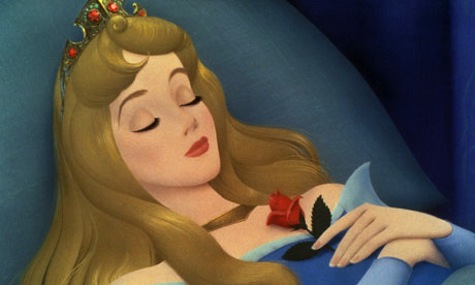So I know what you’re thinking: Seriously, Leigh? Sleeping Beauty is feminist? The classic Disney film made in 1959, i.e. in possibly the least feminist-friendly decade of the entire twentieth century? The quintessential Disney Princess Movie? The one where the titular character is basically a Barbie doll knockoff who does nothing the whole film but sing wistfully about Finding Her Man, before becoming the ultimate passive Damsel in Distress, and other than that has maybe ten actual lines of dialogue? That Sleeping Beauty?
To which I say: Yep, that’s the one.
First, I have to say up front that Sleeping Beauty, regardless of its feminism or lack thereof, is probably one of my favorite Disney movies of all time, if not the favorite. Part of this is pure nostalgia, no doubt—Sleeping Beauty was one of the few movies we had on tape back in the dawn of the VCR era (yes, I’m old, shut up), and my sisters and I therefore watched it approximately seventy billion times purely for lack of many other options. So that’s probably part of it.
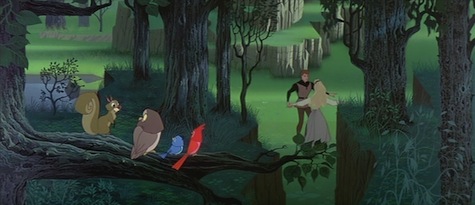
But also, I think, I loved (and still love) Sleeping Beauty because I think it is possibly one of the most artistically impressive and utterly gorgeous animated films ever made, because it was so incredibly aesthetically in harmony with itself and with its subject matter. The wonderfully detailed and stylized animation, drawing its inspiration from medieval art, worked perfectly with the fairytale setting, and the choice to adapt Tchaikovsky’s beautiful score for his ballet of Sleeping Beauty was frankly pure genius, in my opinion. Far from being lazy or derivative, these choices reinforced the archetypal nature of the fairytale—allowing the film to make homage to the story’s earlier iterations while still being something entirely unique on its own. (This documentary, while charmingly dated, gives a pretty good picture of what I am talking about.)
But that is a tangent! We were talking about why I think Sleeping Beauty is also an inexplicably feminist film. Because you are right: Sleeping Beauty herself is barely more than a cipher. Princess Aurora has virtually no character at all in the film other than to be an ideal—and, I might add, an ideal only achieved with the magical fairytale equivalent of surgical enhancement. (Yeah, “gift of beauty” and “gift of song”—awesomely cheaty way of getting skipped ahead in line, there, honey. Also awesome that no one thought maybe a cooler thing to give her would be, I dunno, the “gift of intelligence” or “gift of hand-eye coordination,” or whatever, ain’t it.) Aurora in the film is not a person, per se; she is the prize that the other characters fight over. She is an object, really, and that is not feminist at all.
But, despite that, consider: who is the protagonist of Sleeping Beauty?
It’s not Aurora, that’s for sure, for all the reasons I just stated. She never grows as a character during the course of the film; she has no agency at all, in fact. She doesn’t act; she is acted upon. So she is definitely not the hero of the story.
And perhaps the next obvious answer, then, is to suppose it is Prince Philip. Philip, after all, does definitely act in the film, what with killing the dragon and rescuing the maiden and all, and he has at least a little more character to his character than Aurora does, even if it’s mostly in the form of his Odd Couple relationship with his horse. He rescues Aurora and wins her hand, right? Does heroic deeds, kills the bad guy girl, and gets the girl, right? So that must make him the hero, right?
Well, yeah… except that actually, Philip himself doesn’t do any of those things. Or, he does, technically, but he would never in a million years have been able to do any of the heroic things he does in the film if it weren’t for the fact that he was first rescued by, facilitated by, and actually aimed at the villain of the piece by the actual heroes of Sleeping Beauty: the Three Good Fairies.
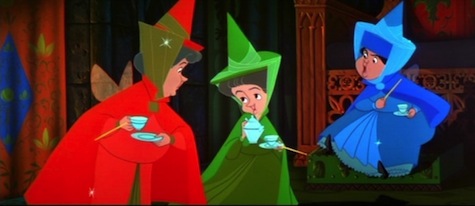
That’s right: the protagonists, the heroes, the main characters of Sleeping Beauty are not a dashing prince or a beautiful princess, but three elderly, frumpy, ditzy women, with ridiculous tiny wings and wands that scatter sparkles everywhere, who can’t bake a cake or sew a dress worth a damn (without cheating, anyway), but when it comes down to brass tacks, are more than capable to the task of saving Aurora, Philip, and the entire damn kingdom from a fearsome foe.
Think about it: it is Flora, Fauna, and Merryweather who make all the critical decisions in the film, the ones which drive the action. They are the ones who act with agency, to counteract their antagonist/enemy, Maleficent—who, it must be noted, is also female, and also the only other character in the film whose decisions and actions drive the plot.
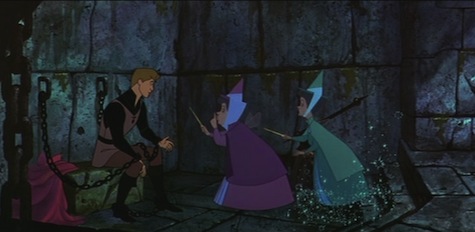
The Good Fairies are the ones who concoct the plan to hide Aurora and attempt to avert the curse placed upon her, and they are the ones who, when their plan goes awry, act to preserve the kingdom, rescue Prince Philip from Maleficent’s clutches, guide him to the castle, and give him the necessary magical augmentation to kill Maleficent at the end. Let’s be real: Philip would have been toast ten times over on that rescue mission, had he not had the three fairies basically babysitting him every step of the way. His victory over Maleficent is not his victory at all, in my opinion; it is Flora, Fauna, and Merryweather’s.
Which is awesome.
The central conflict in Sleeping Beauty is not the romance between Aurora and Philip, therefore, or even the conflict between Maleficent and Aurora’s parents. Instead, the conflict is the Good Fairies’ battle with Maleficent, in which Aurora, Philip, and all the other characters are merely pawns. Not to mention, the Good Fairies are just about the only characters in the film who grow as people in the course of the story, who are different at the end of the story than they are at the beginning, and who the audience identifies with and roots for as people, rather than the stereotypical idealized nonentities Aurora and Philip are, who we are trained to root for by default.
Which means, in sum, that all the truly central, important and relatable characters in the entire film are female. Which, I hope I don’t need to point out, is something that hardly ever happens outside of rom-com “chick flicks.” And certainly within the Disney oeuvre itself, it is most definitely still the exception rather than the rule (though recent films like Frozen are happily making way to bucking that trend).
Which is what I mean when I say that Sleeping Beauty is accidentally the most feminist Disney film. Because making something “feminist” doesn’t necessarily mean making a film where there is a “strong” female character (which is great, but too often ends up meaning that she is essentially a male character with boobs), but making a story where the female characters matter—who are the ones we identify with and who drive the story, instead of being driven by it. And, ideally, where there are multiple female characters who matter, not just one token girl.
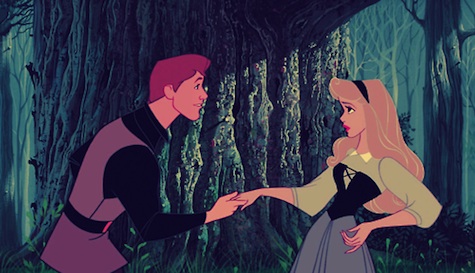
Aurora’s cipher-ness in Sleeping Beauty would be infuriating if she were the only female character in it, but the presence of the Fairies and Maleficent allow her to be what she is without it being a subconscious statement on what all women are. Because there are weak, damsel-like women out there; it’s just that far too often they are the only women we ever get to see, and that is where the problem lies. The problem is that the fundamental lack of multiple female characters in movies means that the one or two female characters who do appear have to stand in for all women, which just isn’t fair.
Mulan, for instance, is a great movie that does some lovely meditations on being a woman in a man’s world, but it still fails the Bechdel Test in that Mulan is the only female character in it who matters. Mulan is still an anomaly, an exception, an oddity in her world. Which is okay as far as it goes, but what’s awesome about Sleeping Beauty is that the Good Fairies are not exceptions or oddities (at least not in the sense that they are female), but simply who they are: heroes who happen to be women. It gives the movie a balance that is generally just missing from movies (Disney or otherwise).
Which, again, is awesome. Not least for how utterly rare it is—even now, more than fifty years later.
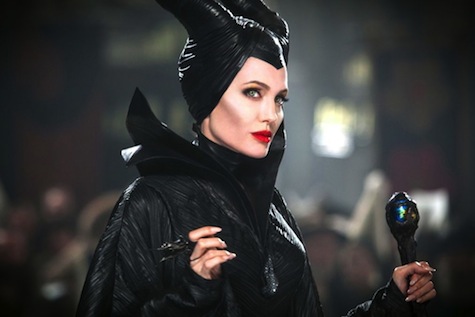
Which brings us to Maleficent, which I saw in the theater a few months ago, and which is what triggered this whole school of thought on my part that is culminating in the post which you are hopefully still reading right now. Because Maleficent, besides being a very good movie that you absolutely should see if you haven’t already, was absolute proof (In My Arrogant Opinion, Of Course) that my contention that Sleeping Beauty is Disney’s most feminist movie is totally correct.
I don’t want to talk too much about the movie for fear of spoiling it, because there are definitely a few plot twists that you don’t want to be forewarned about if you haven’t seen it yet, but the proof I speak of can be basically summed up thusly: Maleficent not only by necessity continues its predecessor’s delightful (if, as I suspect, largely accidental) focus on the female characters of the story (because the female characters are pretty much the only characters worth focusing on), but it actually fails a reverse Bechdel Test. In other words, at no point in the movie do two male characters have a conversation that is not about a woman.
And I suspect I could probably count on one hand the number of Hollywood movies made in the last hundred years for which that is true. (And if I’m wrong, please do tell me about them!)
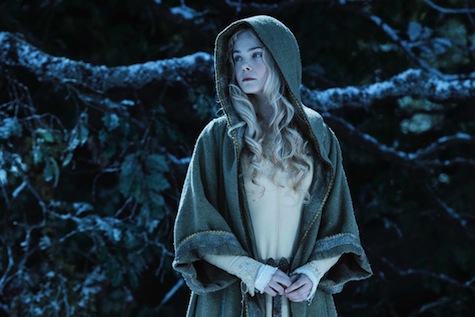
And as if that weren’t enough, Maleficent also redeems the character of Aurora, taking her from the vacant cipher she was in Sleeping Beauty and making her a character of actual depth and agency, whose decisions and actions have a major impact on the story. Granted, it does this rather at the expense of the characters of the Good Fairies, who are ironically reduced to caricatures of themselves, but in a way that is fitting, for this time around it is Maleficent who is the protagonist of the story, and it is her antagonists who are made into one-dimensional (sort-of) villains, just as Maleficent herself was in Sleeping Beauty. (I love Maleficent in the original Disney classic, don’t get me wrong, but there is no doubt that her motivation for being evil in it was presented as, essentially, “because she’s evil.” Which is… not particularly deep, as these things go.)
I love this for many reasons, but not least for my ironic glee at the fact that Maleficent is basically Disney’s fanfiction AU (Alternate Universe) of its own classic film. And it is an AU in the best of ways, being at once both a tribute to, and a clear-eyed modern commentary on, the source material, most particularly on some of the more problematic tropes that the original was prey to (my favorite being the calling-out of the Dude, She’s Like in a Coma trope).
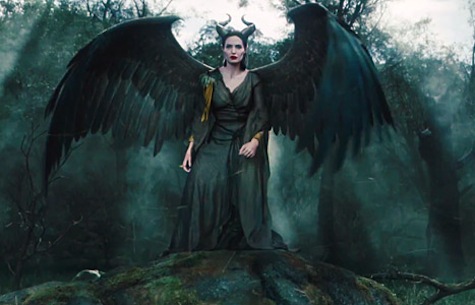
And again, though I suppose Maleficent could be viewed as yet another example of Hollywood Running Out of Ideas, in my personal opinion it is much more fairly viewed as a continuation of the inspiration to use Tchaikovsky’s music for the 1959 version. These stories are told over and over again for a reason, and Maleficent’s reinterpretation of this story is, in my opinion, pretty darn brilliant. And, incidentally, excellent proof that a female-dominated story can be just as good and compelling and awesome (and universally applicable to the human condition) as any other story out there.
So, in conclusion, you should absolutely take some time out to watch both the original Sleeping Beauty, and the modern AU version of it in Maleficent, and maybe take some time to reflect on how awesome they both are, and why we still need more movies like them. Happy watching!
Leigh Butler is a writer, blogger, and rampant opinionator for Tor.com. She is currently conducting the Wheel of Time Reread Redux and A Read of Ice and Fire on the site, and is absolutely convinced that she walked with you once upon a dream, though she declines to speculate on whether alcohol was involved. Whee!










